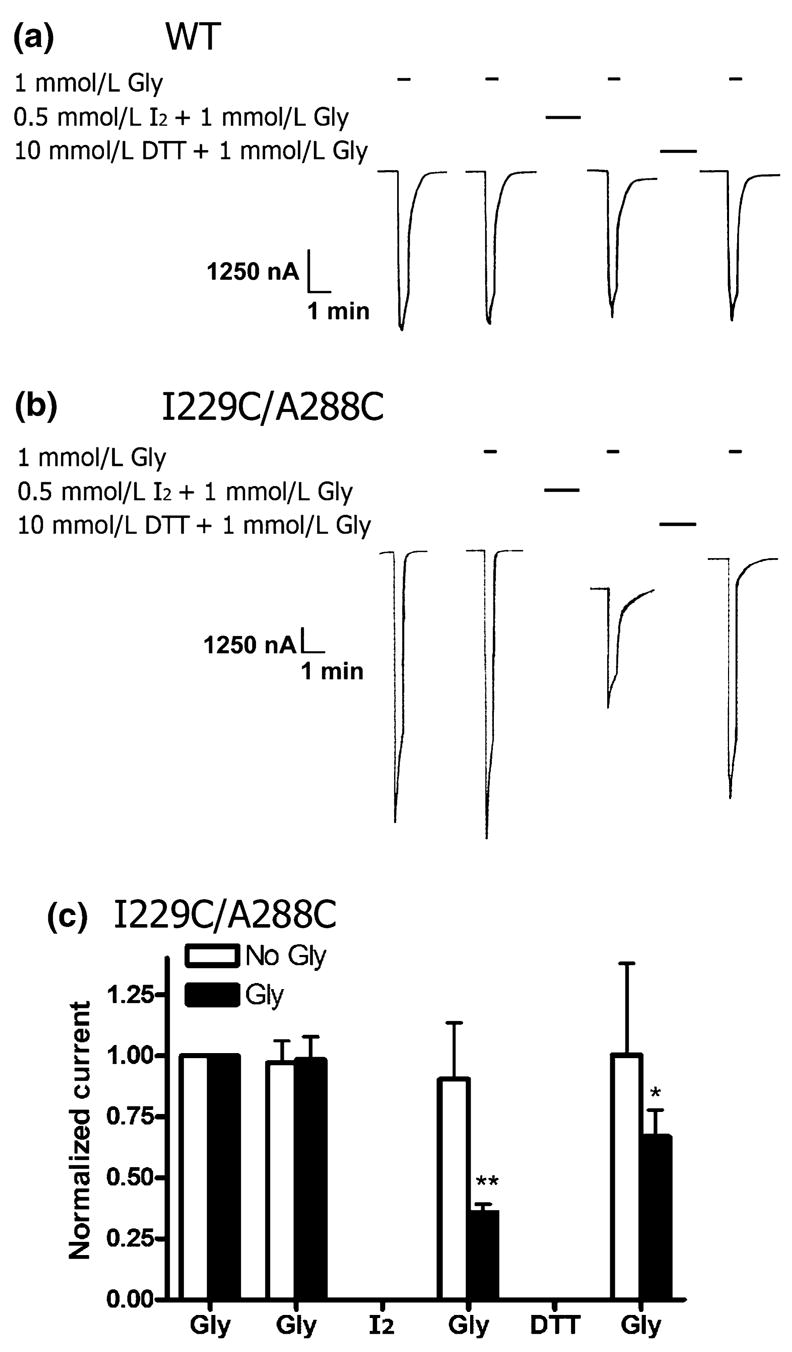Fig. 1.

Effect of oxidation with iodine and reduction with DTT on WT and 1229C/A288C glycine receptors. (a) A WT tracing, which shows that the glycine response is unchanged by application of I2 (0.5 mmol/L, 1 min) and DTT (10 mmol/L, 3 min) in the presence of glycine (1 mmol/L). Oocytes were unclamped during I2 and DTT treatment, so this portion of the tracing is not shown. The intervals between each treatment is 15 min. (b) An I229C/A288C tracing, which shows that the glycine response decreases following application of I2 (0.5 mmol/L, 1 min) in the presence of 1 mmol/L glycine and recovers after treatment with DTT (10 mmol/L, 3 min). (c) I229C/A288C cross-linking with I2 in the absence or presence of glycine (1 mmol/L). Mean results showing that I2 applied in the presence of glycine (Gly) results in a significant decrease in the I229C/A288C receptor response because of disulfide bond formation (n = 5). Reduction with DTT nearly restores the glycine response to the initial amplitude. Disulfide bond formation did not occur when I2 was applied in the absence of glycine (No Gly, n = 7). Glycine responses of each oocyte were normalized to the initial glycine response and averaged. Subsequent glycine responses were compared with the respective initial glycine response by one-way ANOVA and the Dunnett’s post-test (*p < 0.05 and **p < 0.01).
